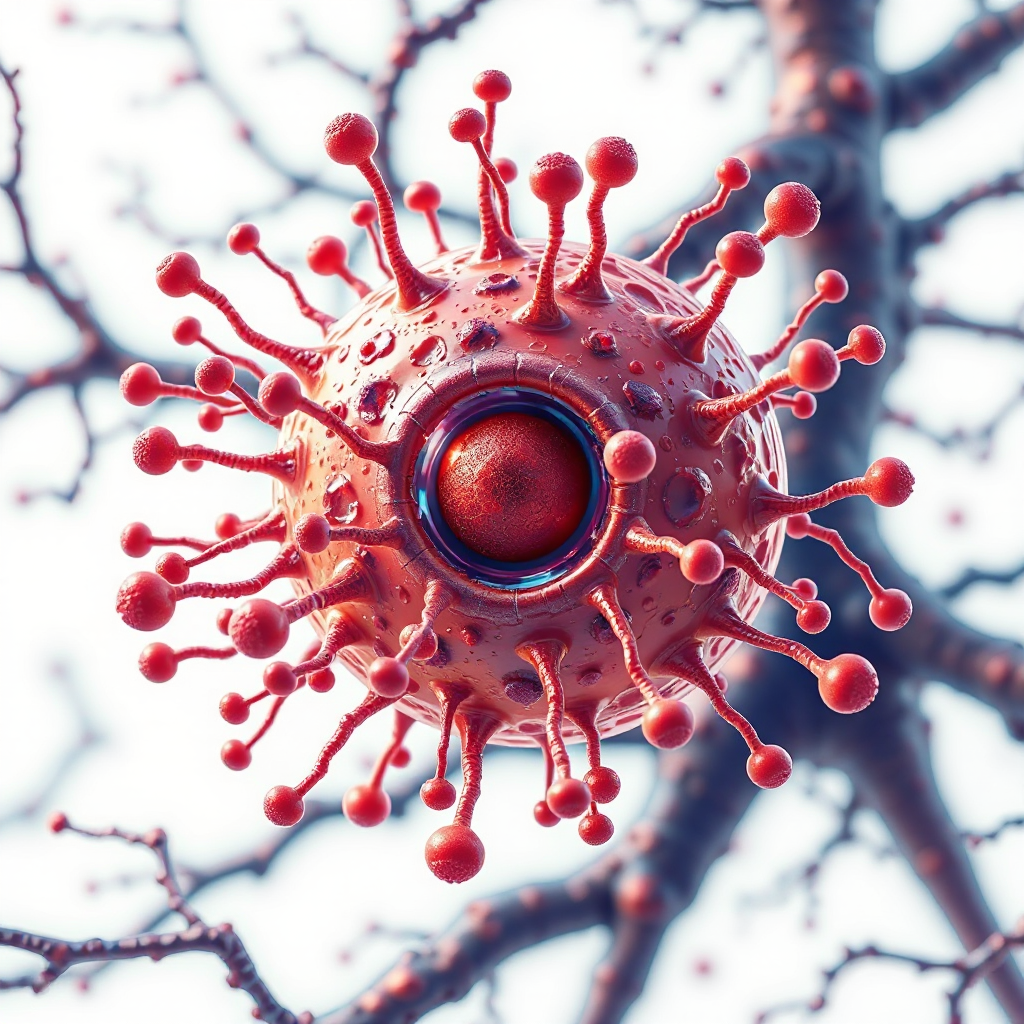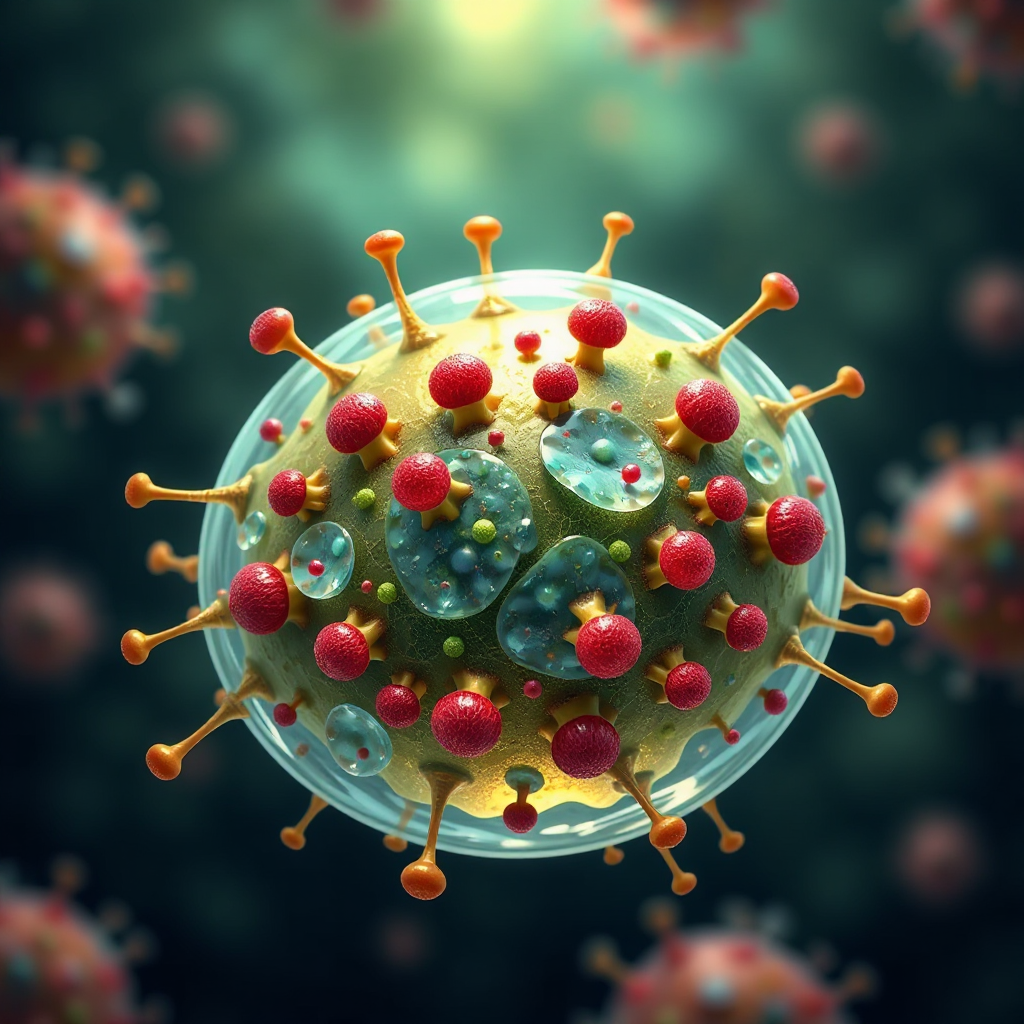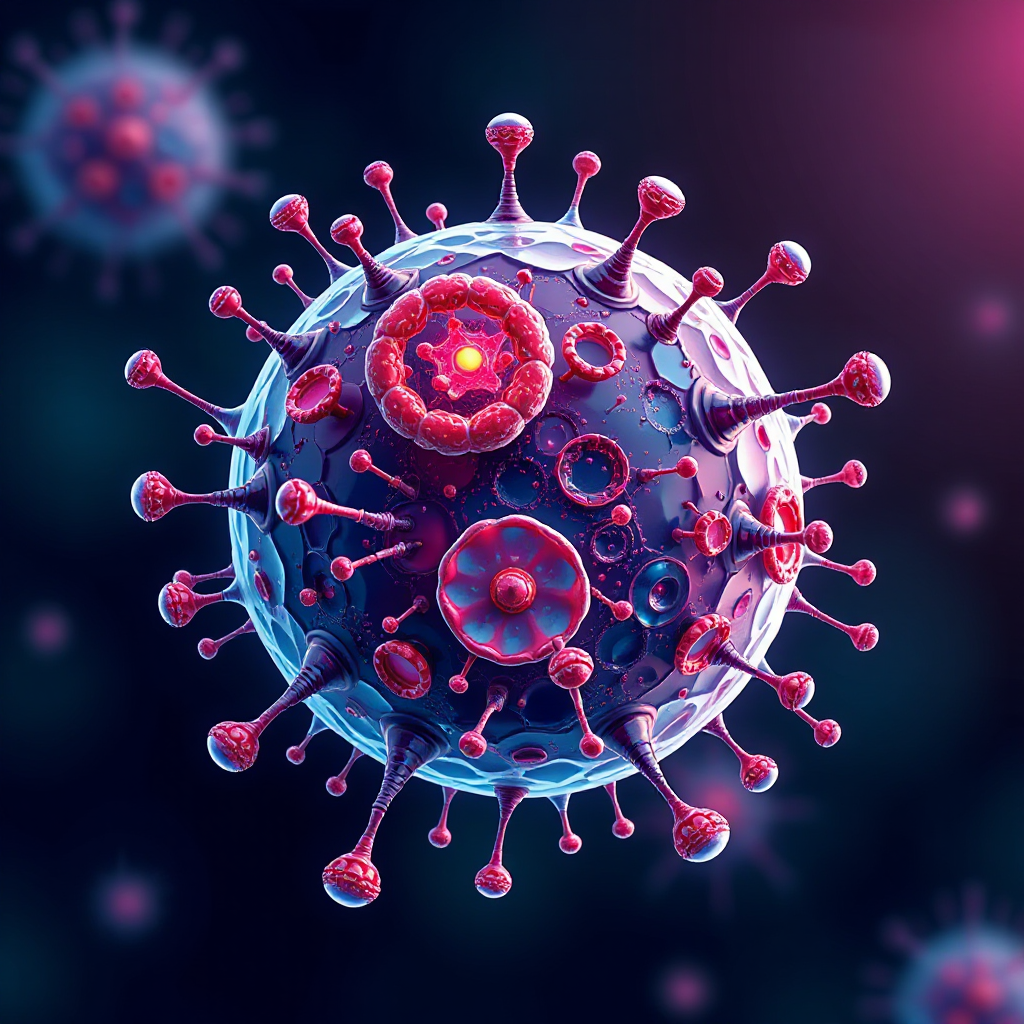What Is Precursor B Lymphoblastic Leukemia?

Precursor B lymphoblastic leukemia is a type of blood cancer that starts in immature B cells, which are crucial for your immune system. These cells develop in your bone marrow, but in this condition, they grow uncontrollably. This rapid growth crowds out healthy blood cells, leading to serious health problems. You might notice symptoms like fatigue, frequent infections, or easy bruising. Since this disease progresses quickly, early detection plays a key role in improving outcomes.
Key Takeaways
Precursor B lymphoblastic leukemia is a fast-growing blood cancer. It starts in young B cells and causes tiredness, weakness, and infections.
Finding it early is very important. Early treatment helps a lot, especially for kids, who often survive when treated quickly.
Changes in genes and things like radiation can raise the risk. Knowing these risks can help doctors find it sooner.
Treatments include chemotherapy, special medicines like Blinatumomab, and bone marrow transplants. Each treatment has good points and possible side effects.
Care during treatment is very important. It helps with symptoms and makes life better. Emotional and physical support really helps patients.
Key Characteristics of Precursor B Lymphoblastic Leukemia
Origin and Development
Precursor B lymphoblastic leukemia begins in immature B cells, which are essential for your immune system. These cells normally develop in your bone marrow, but genetic changes can disrupt this process. Mutations in key genes, such as PAX5, interfere with B-cell differentiation and function. This leads to uncontrolled growth and the accumulation of abnormal cells. Chromosomal abnormalities, like aneuploidy or rearrangements, can activate oncogenes or silence tumor suppressor genes, further driving the disease. These changes prevent normal blood cell production, which causes many of the symptoms you might experience.
Acute Nature and Progression
This type of leukemia progresses rapidly, making early detection critical. Precursor B lymphoblastic leukemia grows quickly because it affects immature cells that divide at a fast rate. Unlike some other forms of leukemia, this one is more common in children and has a better prognosis when treated early. For example:
Pre-B-ALL is a fast-growing leukemia that targets immature B cells.
It is more common in children and responds well to treatment when caught early.
Other forms, like BCR-ABL1 positive leukemia, historically had poor outcomes but now benefit from targeted therapies like tyrosine kinase inhibitors.
Prevalence and Demographics
Precursor B lymphoblastic leukemia occurs more frequently in certain groups. It is most common in children and adults over 50 years old. Males are slightly more likely to develop this condition than females. Ethnicity also plays a role in prevalence, as shown in the table below:
Ethnicity | Number Diagnosed | Age-Adjusted Incidence Rate (AAIR) | Annual Percent Change |
|---|---|---|---|
Latinos | 8,297 | 2.43 | 1.18% |
Non-Latino Whites | 11,714 | 1.56 | 0.97% |
Non-Latino Blacks | 1,639 | N/A | N/A |
Understanding these trends can help you recognize if you or someone you know might be at higher risk.
Symptoms of Precursor B Lymphoblastic Leukemia

Common Physical Symptoms
When precursor B lymphoblastic leukemia develops, you may notice a range of physical symptoms. These symptoms often result from the disruption of normal blood cell production in your bone marrow. Some of the most commonly reported symptoms include:
Shortness of breath
Dizziness or lightheadedness
Pale skin
Reduced appetite and unintended weight loss
Night sweats
Swollen lymph nodes
Enlarged spleen or liver
Chest or abdominal pain
Bone or joint pain
These symptoms can vary in severity, but they often worsen as the disease progresses. For example, fatigue and weakness occur because the leukemia cells crowd out healthy red blood cells, leading to anemia. Similarly, frequent infections may arise due to a reduced white blood cell count, which weakens your immune system.
Other Clinical Signs
Doctors use specific clinical signs to differentiate precursor B lymphoblastic leukemia from other blood disorders. These signs often reflect the underlying impact of the disease on your body. The table below highlights some key clinical signs and their descriptions:
Clinical Sign/Symptom | Description/Impact |
|---|---|
Fatigue | Resulting from low red blood cell count (anemia) |
Weakness | Associated with anemia and low energy levels |
Shortness of breath | Due to reduced oxygen transport from low red blood cells |
Dizziness or lightheadedness | Often linked to anemia and low blood pressure |
Pale skin | A visible sign of anemia |
Frequent infections | Caused by low white blood cell count (leukopenia) |
Bruising easily | Due to low platelet count (thrombocytopenia) |
Swollen lymph nodes | Indicative of immune response or infection |
Enlarged spleen or liver | Common in various blood disorders, including leukemia |
Night sweats | Often a symptom of underlying malignancies |
Chest or abdominal pain | Can be related to organ enlargement or pressure |
Bone or joint pain | May occur due to leukemia infiltration in the marrow |
If you experience these symptoms or signs, it is important to consult a healthcare provider promptly. Early diagnosis can significantly improve outcomes for conditions like precursor B lymphoblastic leukemia.
Causes and Risk Factors
Genetic and Molecular Causes
Precursor B lymphoblastic leukemia often begins with genetic mutations or molecular abnormalities that disrupt normal cell development. These changes can lead to uncontrolled growth of immature B cells. Some of the most common genetic factors include:
PAX5: Mutations occur in over 30% of cases, causing reduced gene function.
IKZF1, IKZF2, and IKZF3: These genes play a role in B-cell development, and their inactivation contributes to leukemia.
CRLF2: Rearrangements are found in up to 50% of BCR-ABL1-like cases.
RUNX1: Amplifications are linked to intrachromosomal amplification of chromosome 21 (iAMP21).
Hypodiploidy: A condition where cells have fewer chromosomes than normal, often associated with poor treatment outcomes.
These genetic changes can activate pathways like RAS signaling, which promotes the growth of leukemia cells. Understanding these mutations helps doctors develop targeted therapies to improve treatment outcomes.
Environmental and Lifestyle Factors
Certain environmental exposures increase your risk of developing precursor B lymphoblastic leukemia. These include:
Radiation exposure: High levels of radiation, such as those experienced by atomic bomb survivors, significantly raise the risk.
Chemotherapy drugs: Previous treatment with certain chemotherapy agents can lead to secondary leukemia.
Hazardous chemicals: Benzene, found in industrial products, cigarette smoke, and some household items, is a known risk factor.
Reducing exposure to these harmful substances can lower your risk. For example, avoiding smoking and limiting contact with industrial chemicals may help protect your health.
High-Risk Groups
Some populations face a higher risk of developing precursor B lymphoblastic leukemia. The table below highlights these groups:
Risk Factor | Description |
|---|---|
Age | More common in children and adults over 50 years old. |
Sex | People assigned male at birth are more likely to develop this condition. |
Genetics | Conditions like Down syndrome and Fanconi anemia increase susceptibility. |
Environmental Exposures | Radiation, chemotherapy, or benzene exposure raises the likelihood of leukemia. |
If you belong to one of these groups, regular health check-ups can help detect potential issues early. Early diagnosis plays a critical role in improving outcomes for this aggressive disease.
Diagnosis of Precursor B Lymphoblastic Leukemia

Initial Evaluation
Diagnosing precursor B lymphoblastic leukemia begins with a thorough evaluation of your symptoms and medical history. Your doctor will perform a physical exam to check for signs like swollen lymph nodes, an enlarged spleen, or unusual bruising. Blood tests, such as a complete blood count (CBC), are often the first step. These tests measure your red and white blood cells and platelets. Abnormal results, like a high white blood cell count or low platelet levels, may indicate leukemia. If your doctor suspects this condition, they will recommend further testing to confirm the diagnosis.
Confirmatory Tests
To confirm a diagnosis of precursor B lymphoblastic leukemia, doctors rely on specialized laboratory tests. These tests provide detailed information about the cancer cells and their characteristics. The table below outlines some of the most commonly used tests:
Test | Description |
|---|---|
Genetic Testing | Diagnoses cancer, helps plan treatment, and assesses treatment effectiveness. |
Immunophenotyping | Identifies cancer cells using antibodies based on surface antigens, aiding in leukemia classification. |
Lumbar Puncture | Collects cerebrospinal fluid to check for leukemia cells, indicating spread to the brain or spinal cord. |
Chest X-ray | Visualizes the chest area to detect any lumps formed by leukemia cells. |
These tests help doctors determine the type and extent of leukemia, which is essential for creating an effective treatment plan.
Additional Diagnostic Tools
Advanced diagnostic tools play a crucial role in understanding the genetic and molecular features of precursor B lymphoblastic leukemia. Techniques like microarrays and sequencing have uncovered hidden genetic changes that define new subtypes of this disease. Whole genome sequencing (WGS) is becoming a standard method for childhood cases. It provides a comprehensive view of the cancer’s genetic landscape, improving risk assessment and treatment strategies. These advancements allow doctors to tailor therapies to your specific needs, increasing the likelihood of successful outcomes.
Treatment Options for Precursor B Lymphoblastic Leukemia
Chemotherapy
Chemotherapy remains the cornerstone of treatment for precursor B lymphoblastic leukemia. It uses powerful drugs to destroy leukemia cells and prevent their spread. Doctors often divide chemotherapy into three phases: induction, consolidation, and maintenance. Each phase targets leukemia cells at different stages to maximize effectiveness.
The success rates of chemotherapy vary based on age. For children, the long-term survival rate is nearly 90%. For adults, the 5-year survival rates decrease with age:
59% for adults aged 20 to 39
43% for those aged 40 to 59
29% for individuals aged 60 to 69
13% for those 70 and older
These statistics highlight the importance of early and aggressive treatment, especially for younger patients.
Targeted Therapy
Targeted therapies offer a more precise approach by focusing on specific molecules involved in leukemia growth. One approved therapy, Blinatumomab, engages your immune system by activating T-cells to attack leukemia cells. This innovative treatment has shown promise for both children and adults with B-cell precursor ALL.
Therapy Name | Approval Status | Mechanism of Action |
|---|---|---|
Blinatumomab | Approved for adult and pediatric patients | Engages T-cells to target and eliminate leukemia cells |
While effective, targeted therapies can cause side effects. Common issues include cytokine release syndrome, which requires timely intervention, and neurologic toxicity, which may lead to headaches, confusion, or seizures.
Side Effect | Description | Prevalence in Trials |
|---|---|---|
Cytokine Release Syndrome | A serious reaction that can be managed with timely intervention. | Varies, with severe cases noted. |
Neurologic Toxicity | Includes headaches, confusion, seizures, and may progress to encephalopathy. |
Bone Marrow Transplant
A bone marrow transplant (BMT) offers a potential cure for some patients. This procedure replaces your diseased bone marrow with healthy stem cells from a donor. Doctors often recommend BMT for patients who do not respond well to chemotherapy or experience a relapse. The success of this treatment depends on factors like your age, overall health, and the availability of a compatible donor.
BMT carries risks, including infections and graft-versus-host disease (GVHD). However, advancements in transplant techniques have improved outcomes. If you are a candidate for BMT, your healthcare team will guide you through the process and discuss the potential benefits and risks.
Supportive Care
Supportive care plays a vital role in managing precursor B lymphoblastic leukemia. While treatments like chemotherapy and targeted therapy focus on eliminating cancer cells, supportive care addresses the physical, emotional, and psychological challenges you may face during and after treatment. This approach ensures that your overall well-being remains a priority throughout your cancer journey.
Physical Support
Managing side effects from treatment is a key aspect of supportive care. You may experience fatigue, nausea, or infections due to weakened immunity. To help with these issues, your healthcare team might recommend:
Medications: Anti-nausea drugs, antibiotics, or pain relievers.
Nutritional support: A dietitian can guide you on maintaining a balanced diet to boost energy and immunity.
Physical therapy: Exercises to improve strength and reduce fatigue.
These interventions can help you feel more comfortable and maintain your quality of life during treatment.
Emotional and Psychological Support
A leukemia diagnosis can take a toll on your mental health. You might feel anxious, overwhelmed, or even depressed. Supportive care includes counseling and therapy to help you cope with these emotions. Family members often face similar challenges.
A study of 130 former childhood leukemia patients and their parents found significantly higher levels of posttraumatic stress symptoms in mothers and fathers of survivors (p < .001). This highlights the long-term psychological impact on families and the importance of psychological interventions during and after treatment.
Support groups can also provide a sense of community. Sharing your experiences with others who understand your journey can reduce feelings of isolation and offer practical advice.
Holistic Approach
Supportive care extends beyond physical and emotional needs. It includes spiritual care, financial counseling, and assistance with navigating healthcare systems. By addressing all aspects of your life, supportive care ensures you receive comprehensive support tailored to your unique needs.
Prognosis and Outlook
Survival Rates and Influencing Factors
The survival rates for precursor B lymphoblastic leukemia vary significantly based on age and treatment type. Children have the highest 5-year survival rate, nearing 90%, while older adults face more challenging outcomes. The table below highlights these differences:
Age Group | 5-Year Survival Rate |
|---|---|
Children | Nearly 90% |
Adults 20-39 | 59% |
Adults 40-59 | 43% |
Adults 60-69 | 29% |
Adults 70+ | 13% |
Several factors influence these outcomes. Younger patients often respond better to treatment due to their overall health and the biology of their leukemia. Access to advanced therapies also plays a critical role. For adults, early diagnosis and aggressive treatment improve survival chances.
Long-Term Outcomes
Your long-term outlook depends on various factors, including age, genetics, and environmental exposures. Some of the most significant influences include:
Age: Younger patients tend to have better outcomes.
Sex: Males face a slightly higher risk of developing this leukemia.
Genetics: Conditions like Down syndrome and Fanconi anemia increase susceptibility.
Environmental exposures: Radiation, chemotherapy, and hazardous chemicals like benzene raise the risk.
Advancements in treatment have improved survival rates, but long-term challenges remain. Some patients experience late effects, such as heart or lung problems, due to chemotherapy. Regular follow-ups and a healthy lifestyle can help you manage these risks.
Advances in Research
Recent breakthroughs in research have transformed the treatment landscape for precursor B lymphoblastic leukemia. Immunotherapy has emerged as a game-changer, significantly improving three-year survival rates in adults. This progress has led to updates in treatment guidelines and practices at major cancer centers.
The FDA's approval of blinatumomab (Blincyto) for use in consolidation chemotherapy marks another milestone. This therapy targets leukemia cells even when no visible disease remains, enhancing survival rates for patients in remission. These advancements offer hope for better outcomes and a brighter future for those diagnosed with this aggressive leukemia.
Precursor B lymphoblastic leukemia is a fast-growing blood cancer that starts in immature B cells. It disrupts normal blood cell production, leading to symptoms like fatigue, weakness, and pale skin. You might also notice swollen lymph nodes, night sweats, or pain in the chest or abdomen. This condition often results from genetic changes that cause uncontrolled cell growth. Risk factors include age, sex, genetic conditions like Down syndrome, and exposure to radiation or hazardous chemicals.
Early diagnosis significantly improves outcomes, especially for children, who often respond well to treatment. Advances in therapies, such as CAR T-cell therapy and Blinatumomab, have transformed survival rates by targeting cancer cells more effectively. These breakthroughs offer hope for better outcomes and a brighter future for patients. Ongoing research continues to refine treatments, bringing us closer to curing this aggressive disease.
Early detection and innovative therapies can make a life-changing difference. If you or someone you know faces this diagnosis, remember that progress in medical science is paving the way for improved care and survival.
FAQ
1. What is the difference between acute and chronic leukemia?
Acute leukemia progresses quickly and requires immediate treatment. Chronic leukemia develops slowly and may not need treatment right away. Precursor B lymphoblastic leukemia is an acute form, meaning it grows rapidly and disrupts normal blood cell production.
2. Can precursor B lymphoblastic leukemia be cured?
Yes, many patients achieve remission with treatment. Children often have higher cure rates, nearing 90%. Adults may face more challenges, but advancements like targeted therapies and bone marrow transplants improve outcomes.
3. What tests confirm a diagnosis of precursor B lymphoblastic leukemia?
Doctors use blood tests, bone marrow biopsies, and genetic testing. These tests identify abnormal cells and their genetic mutations. Immunophenotyping helps classify the leukemia type, while lumbar punctures check for spread to the brain or spinal cord.
4. Are there side effects from leukemia treatments?
Yes, treatments like chemotherapy and targeted therapy can cause side effects. Common issues include fatigue, nausea, infections, and hair loss. Your healthcare team will provide supportive care to manage these effects and improve your quality of life.
5. How can I support someone with precursor B lymphoblastic leukemia?
Offer emotional support by listening and being present. Help with daily tasks or accompany them to appointments. Encourage them to follow their treatment plan and connect with support groups for additional resources.
💡 Tip: Small gestures, like preparing meals or sending encouraging messages, can make a big difference.
See Also
A Simple Guide to B-Cell Prolymphocytic Leukemia
Exploring Chronic Lymphocytic Leukemia: An Overview
Simplified Explanation of Hepatosplenic T-Cell Lymphoma
Understanding Acute Lymphoblastic Leukemia and Its Signs
Follicular Lymphoma: Definition and Common Symptoms Explained
